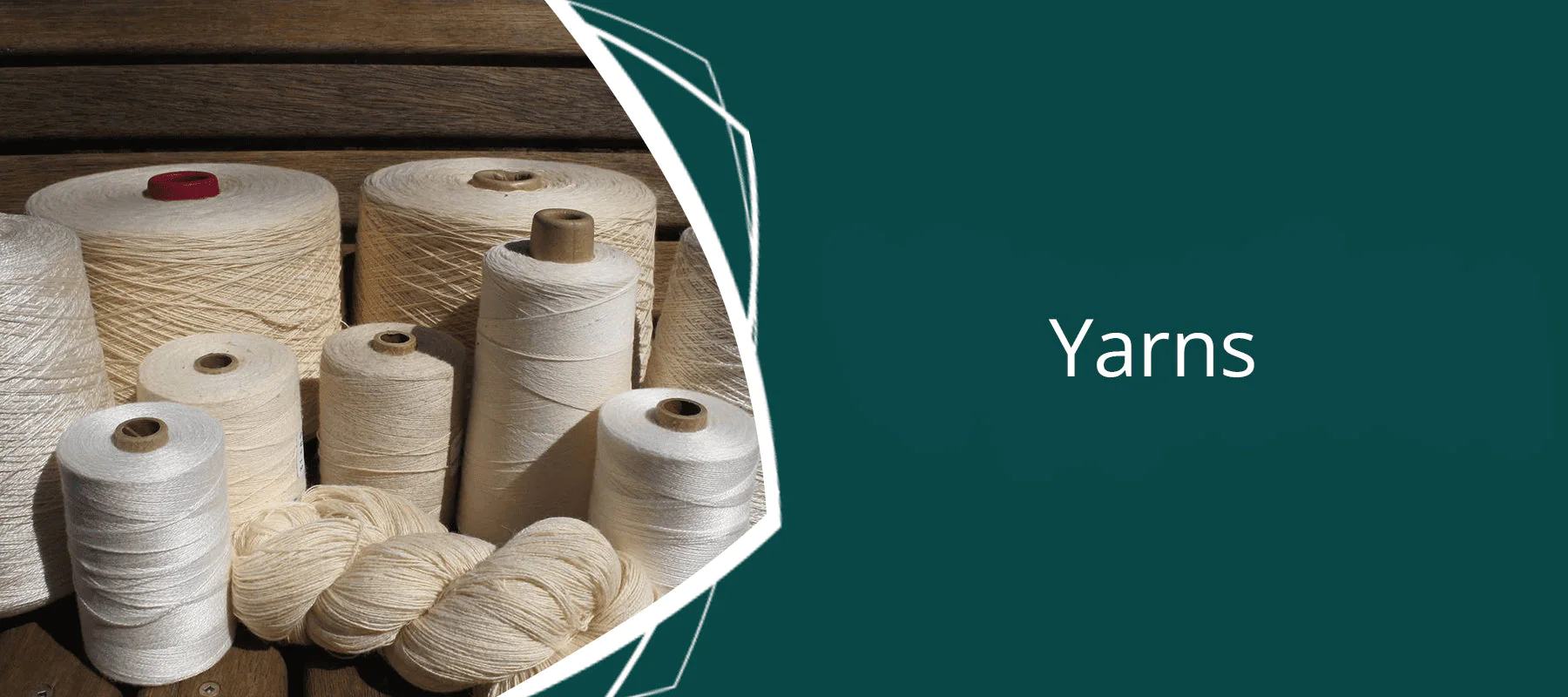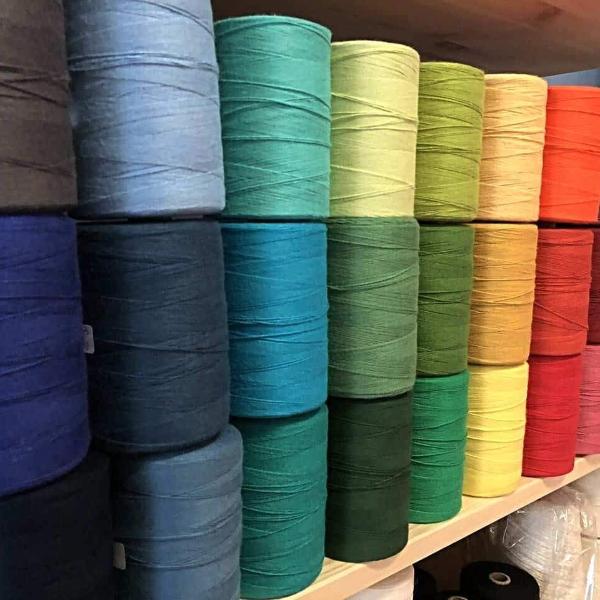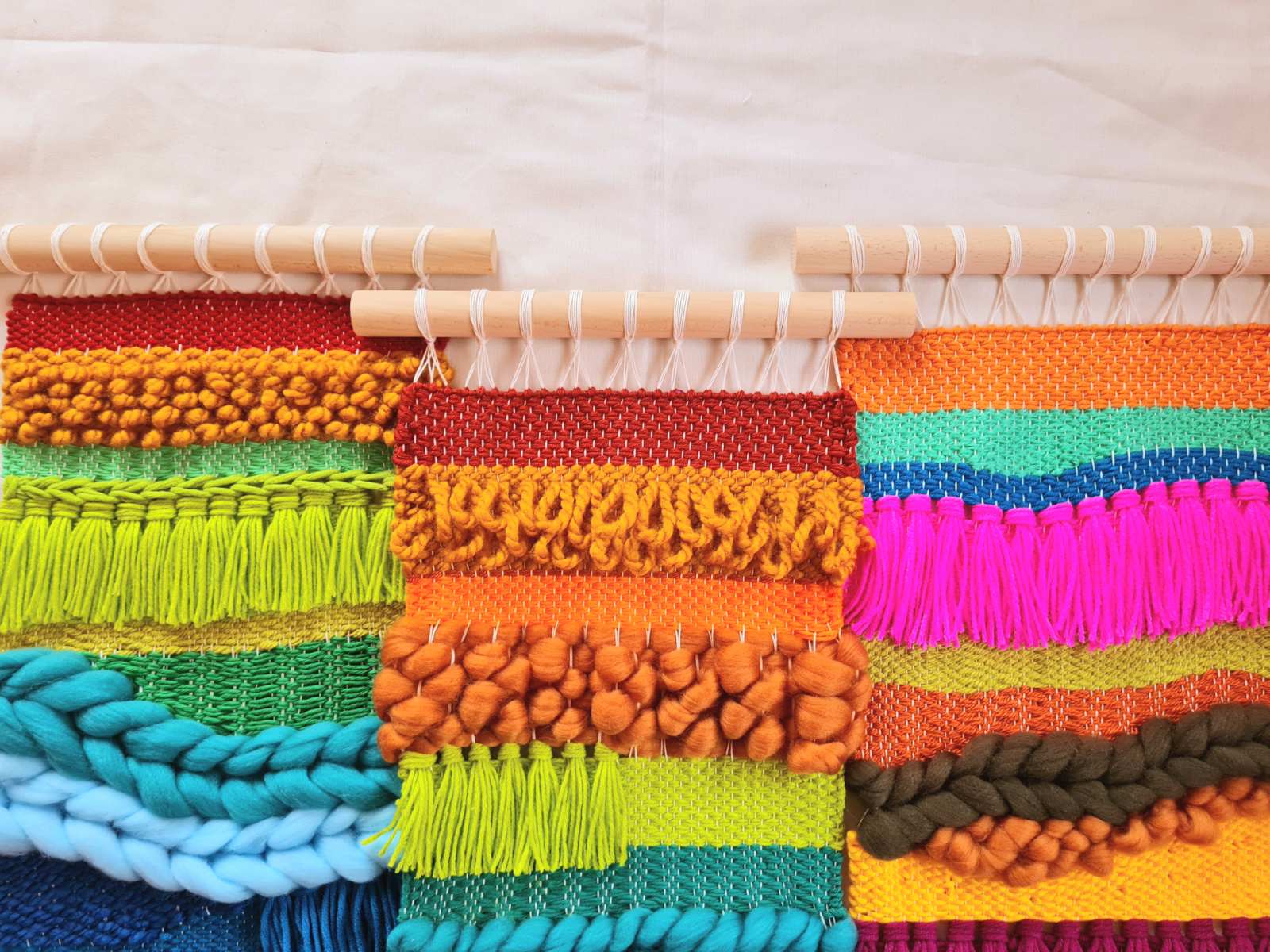Specialty yarns are a fascinating aspect of the textile industry that adds a unique touch to weaving projects. Unlike regular yarns, specialty yarns are specifically designed to have distinct characteristics and properties that make them stand out. Today, Weaving.top will explore some specialty yarns for weaving!
These yarns can be made from various materials such as silk, wool, cotton, or synthetic fibers and are often created using special techniques or treatments.
Weaving is an ancient craft that involves interlacing two sets of threads – the warp and weft – to create fabric. While traditional weaving typically uses standard yarns, specialty yarns offer weavers an opportunity to enhance their creations with added texture, color, and pattern. By incorporating these unique yarns into their projects, weavers can elevate their work from ordinary to extraordinary.
Key Takeaways
- Specialty yarns can add unique texture, color, and pattern to your weaving projects.
- There are many types of specialty yarns available, including metallic, boucle, and ribbon yarns.
- Weaving with specialty yarns requires some adjustments to your weaving techniques and equipment.
- Incorporating specialty yarns into traditional weaving techniques can create stunning and unexpected results.
- Using specialty yarns in your weaving projects can elevate your work to a new level of creativity and artistry.
The Fascinating World of Specialty Yarns
The world of specialty yarns is vast and diverse, offering weavers a wide range of options for experimentation and creativity. Some popular types of specialty yarn include metallic yarns, boucle yarns, chenille yarns, ribbon yarns, and novelty yarns.
Metallic yarn is made by wrapping thin strips of metal around a core thread. It adds shimmering effects to woven fabrics and is often used for decorative purposes in garments or home decor items.
Boucle (pronounced boo-clay) is a textured novelty fiber with loops along its length that create interesting patterns when woven into fabric. It adds depth and dimensionality to woven pieces.
Chenille is another type of textured novelty fiber known for its softness and luxurious feel. It has a velvety appearance due to its pile construction which creates a plush effect when woven into fabric.
Ribbon Yarn consists of flat strips resembling ribbons rather than traditional spun fibers like other types of specialty yarn do; it can be used as both warp or weft yarns to create unique patterns and textures.
Novelty yarns encompass a wide range of unconventional fibers and constructions. They can include yarns with irregular thickness, varying textures, or even incorporate beads or sequins for added embellishment.
Types of Specialty Yarns for Weaving
1. Metallic Yarns: Metallic yarns are made by wrapping thin strips of metal around a core thread, creating a shimmering effect when woven into fabric. These yarns come in various colors and can be used to add a touch of glamour to any weaving project.
2. Boucle Yarns: Boucle yarn is characterized by its looped texture, which adds depth and dimensionality to woven fabrics. It creates interesting patterns when woven into fabric and is often used for creating textured garments or home decor items.
3. Chenille Yarns: Chenille yarn is known for its softness and luxurious feel due to its pile construction. When woven into fabric, it creates a velvety appearance that adds richness to any project.
4. Ribbon Yarns: Ribbon yarn consists of flat strips resembling ribbons rather than traditional spun fibers like other types of specialty yarn do. It can be used as both warp or weft threads in weaving projects, allowing weavers to create unique patterns and textures.
5. Novelty Yarns: Novelty yarn encompasses a wide range of unconventional fibers and constructions that add interest and uniqueness to weaving projects. These can include irregularly thick or textured strands, as well as those incorporating beads or sequins for added embellishment.
What Are The Most Expensive Specialty Yarns For Weaving?
One of the most expensive yarns for weaving is often associated with luxury fibers such as qiviut, vicuña, and certain types of silk. Here are some examples:
- Qiviut Yarn:
- Qiviut comes from the undercoat of the muskox and is known for its softness and warmth. Due to its rarity and the challenges in harvesting the fiber, qiviut yarn is among the most expensive.
- Vicuña Yarn:
- Vicuña wool comes from the vicuña, a South American camelid. Vicuña fibers are extremely fine, soft, and luxurious. Vicuña yarn is considered one of the most expensive fibers globally.
- Mulberry Silk Yarn:
- Mulberry silk is produced by silkworms that feed on mulberry leaves. Yarn made from high-quality mulberry silk is prized for its smoothness and sheen. While not as rare as qiviut or vicuña, premium mulberry silk can still be relatively expensive.
- Cashmere Yarn:
- Cashmere is derived from the soft undercoat of cashmere goats. While it’s more widely available than qiviut or vicuña, high-quality cashmere yarn, particularly from certain regions, can be expensive.
Exploring the Unique Characteristics of Specialty Yarns
| Yarn Type | Characteristics |
|---|---|
| Alpaca Yarn | Soft, lightweight, hypoallergenic, warm, durable |
| Cashmere Yarn | Soft, luxurious, warm, lightweight, delicate |
| Mohair Yarn | Fluffy, silky, warm, durable, lightweight |
| Silk Yarn | Shiny, smooth, lightweight, strong, breathable |
| Bamboo Yarn | Soft, silky, breathable, eco-friendly, anti-bacterial |
Specialty yar ns are a type of yarn that are known for their unique characteristics and properties. These yarns are often made from unconventional materials or have special features that set them apart from traditional yarns.
One of the most common types of specialty yarns is novelty yarn, which is characterized by its unusual texture or appearance.
Novelty yarns can be made from a variety of materials, such as ribbon, eyelash fibers, or metallic threads, and can create interesting effects when knitted or crocheted.
Another type of specialty yarn is self-striping yarn, which is designed to create stripes or patterns as it is worked up. This type of yarn is popular for creating visually appealing projects without the need for color changes.
Other specialty yarns include boucle yarn, which has loops or curls along its length, and chenille yarn, which has a soft and velvety texture.
Overall, specialty yarns offer a wide range of options for crafters looking to add unique and eye-catching elements to their projects.
FAQs
What are specialty yarns?
Specialty yarns are unique types of yarn that are made from different materials, textures, and colors. They are often used for specific purposes such as knitting, crocheting, weaving, or embroidery.
What are the different types of specialty yarns?
There are many different types of specialty yarns, including novelty yarns, hand-dyed yarns, self-striping yarns, gradient yarns, metallic yarns, and many more.
What are the benefits of using specialty yarns?
Specialty yarns can add texture, color, and interest to your projects. They can also be used to create unique and personalized items that stand out from the crowd.
Where can I buy specialty yarns?
Specialty yarns can be found at many craft stores, online retailers, and specialty yarn shops. Some yarn manufacturers also sell their products directly to consumers.
How do I choose the right specialty yarn for my project?
When choosing a specialty yarn, consider the texture, weight, and color of the yarn, as well as the type of project you are working on. It is also important to read the label to ensure that the yarn is suitable for your intended use.
What are some popular projects that use specialty yarns?
Specialty yarns can be used for a wide range of projects, including scarves, shawls, hats, sweaters, blankets, and more. Some popular techniques for using specialty yarns include knitting, crocheting, weaving, and embroidery.
Originally posted 2024-01-15 04:52:54.






